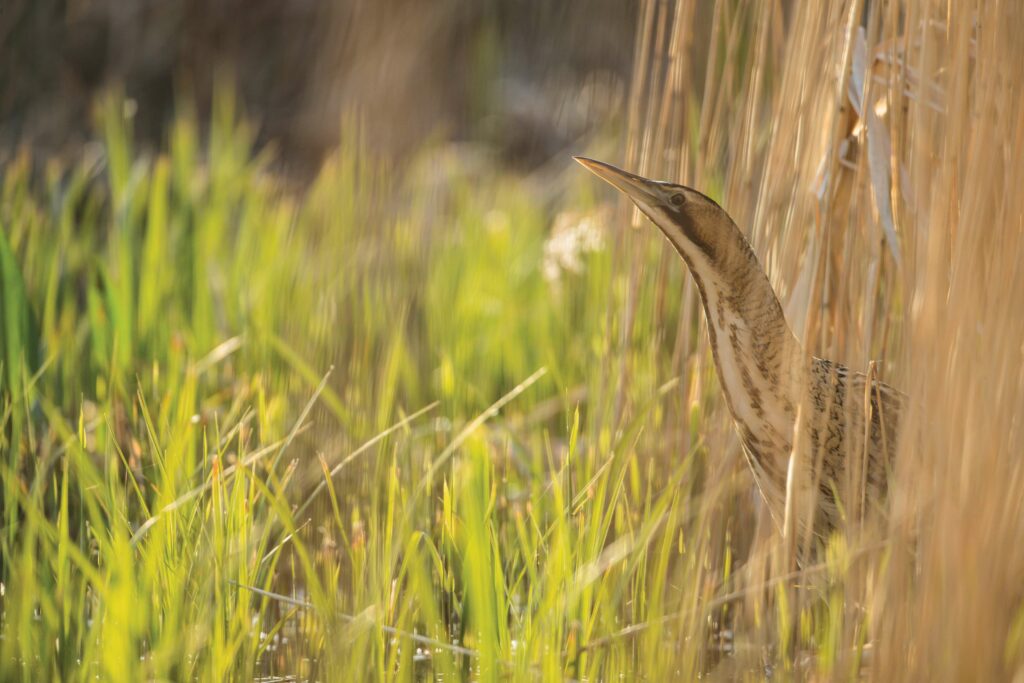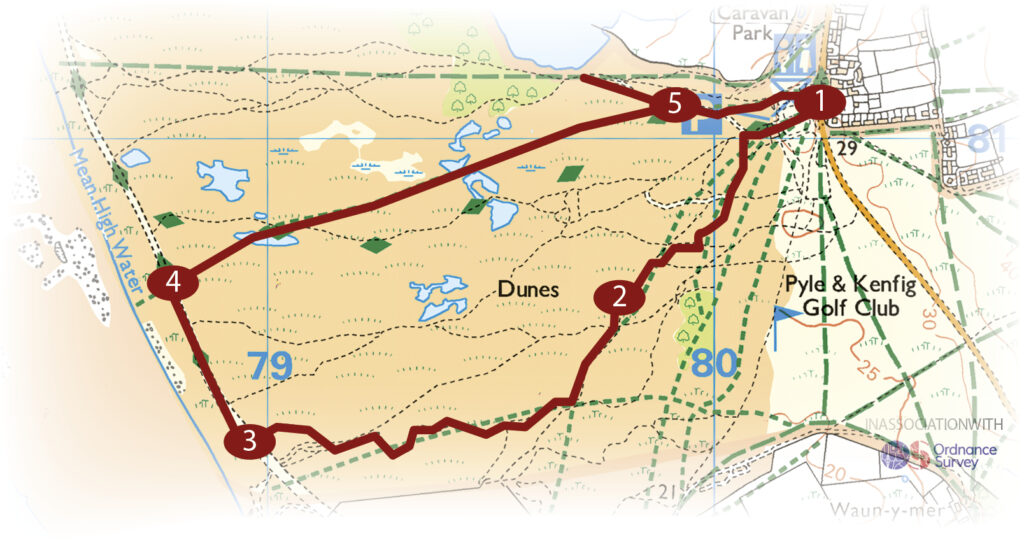WALK: Kenfig National Nature Reserve, Bridgend
Dynamic dunescapes
Rare orchids, booming bitterns and flitting bees and butterflies make Kenfig’s shifting sands a delight to visit in spring, says Margaret Bartlett

Who would have thought that in the shadow of Port Talbot Steelworks’ belching chimneys lies a unique and astonishingly beautiful wonder of nature? Kenfig National Nature Reserve is one of Europe’s most important wildlife sites – all that remains of a vast active sand dune system that once stretched along much of the South Wales coast.
Home to a host of rare and threatened species, including the fen orchid, hairy dragonfly, bittern and great crested newt, Kenfig’s habitats are truly precious. An SSSI and Important Plant Area (IPA) with a mix of habitats, from woodland to a mosaic of wetlands, saltmarsh, sand dunes and the largest natural freshwater lake in South Wales, Kenfig is a treasure trove for rare-plant lovers and birdwatchers, all within easy reach of Cardiff and Swansea.
FLOWERING TREASURES
With around 500 species of flowering plants found here a spring visit is sure to be bountiful. Look for early marsh-orchids and rare petalwort – a tiny bright-green liverwort – seen in damp sand dune slacks: flat depressions between dunes. Look for rare shrill carder bumblebees from April and, in summer, meadow grasshoppers and dark green fritillary butterflies.
Kenfig is also one of the few places in the UK to see the critically endangered fen orchid, found flowering among the mosses in the reserve’s dune slacks in June and July.
In spring, you may be lucky enough to hear the loud booming call of the bittern from the bird hide overlooking 28-hectare Kenfig Pool. But perhaps don’t wade in as you may leave with an unwanted friend – the pool is host to medicinal leeches, a protected species. In summer, train your bins towards the dunes to search for skylarks, meadow pipits and willow warblers.
Autumn and winter are equally as intriguing seasons to visit, as wildfowl flock to the pool, including pochards, water rails and goldeneyes. The damp ground also makes the reserve a fungi-hunter’s delight.
Undulating, soft sandy paths criss-cross this ever-changing landscape. Sadly, the paths aren’t wheelchair-accessible.
THE ROUTE
3 MILES/4.8KM | 1 HOUR 45 MINUTES | MODERATE

1 SANDY TRACKS
From the car park (£2 for three hours), walk to the right of the visitor centre (which has toilets) to find the beginning of two waymarked trails. Follow the yellow waymarker for Sker Beach Circular Walk, taking the wide sandy path to the left. Continue along the path and at the fork, go left. An open area of dune grassland, studded with wildflowers in summer, soon appears to your right.
2 NO SLACKING
As the path curves to the left, damp, sheltered dune slacks appear to your right; pause to hunt for water mint and early marsh-orchids. Continue towards finger post nine, for another atmospheric slack, a good spot to search for fen orchids in summer.
3 BEACH VIEW
As you summit the dunes bordering the beach, the whipped waters of Swansea Bay come into view. Turn right to join the Wales Coast Path, where you can search for sea holly and sea stock. At a waymarker pointing into the dunes, turn right to go inland.
4 DUNE RIDGES
As you walk along the ridge, with glinting slacks on your right, look out for wild thyme and sand cat’s-tail growing in the bare sand. When you reach post 24, turn left, taking the path through the thickets of burnet rose. At a fork, keep left.
5 VISIT THE BIRD HIDE
The path opens out on to a wide grassy area; at a green waymarker, turn to the left across the open grassland towards Kenfig Pool. Follow the signpost to the left to find the bird hide, or take the path up to the right to return to the visitor centre. Top up your energy with a treat from The Hyde Out café.
Margaret Bartlett enjoys discovering new coast and country walks near her home in South Wales.